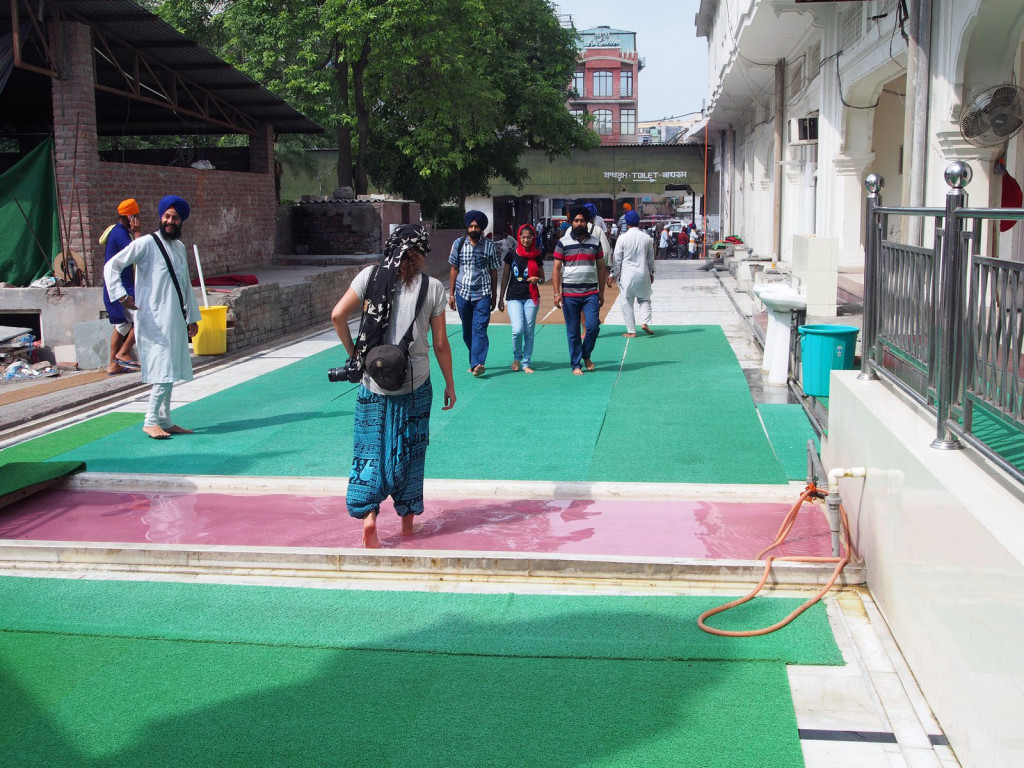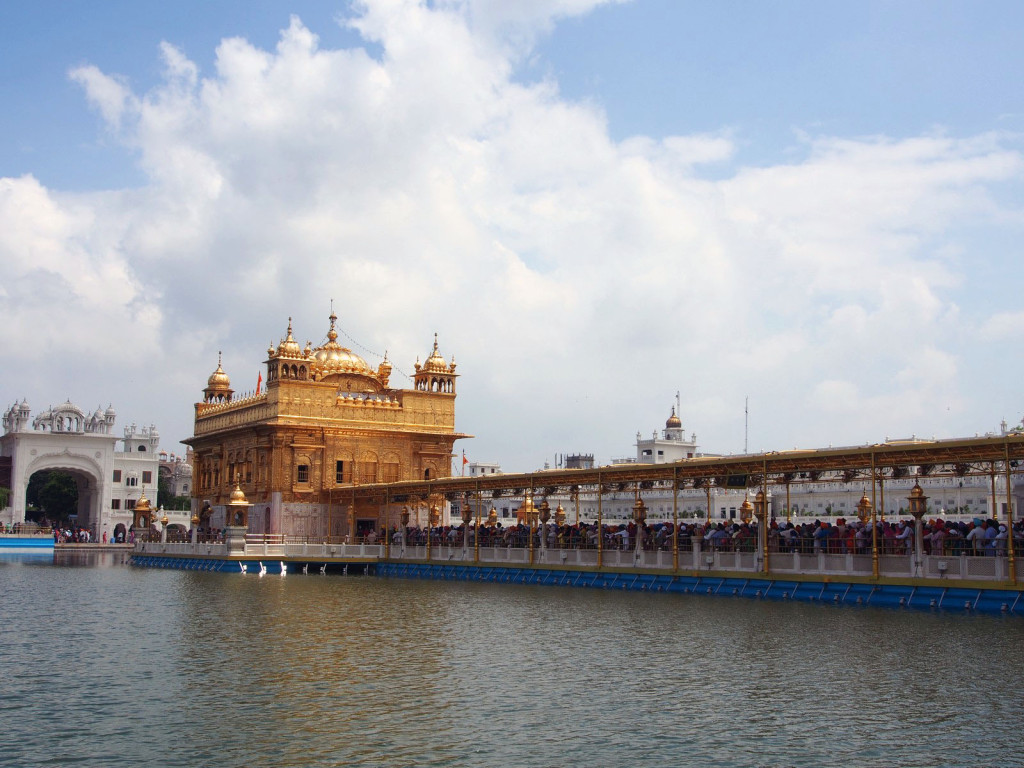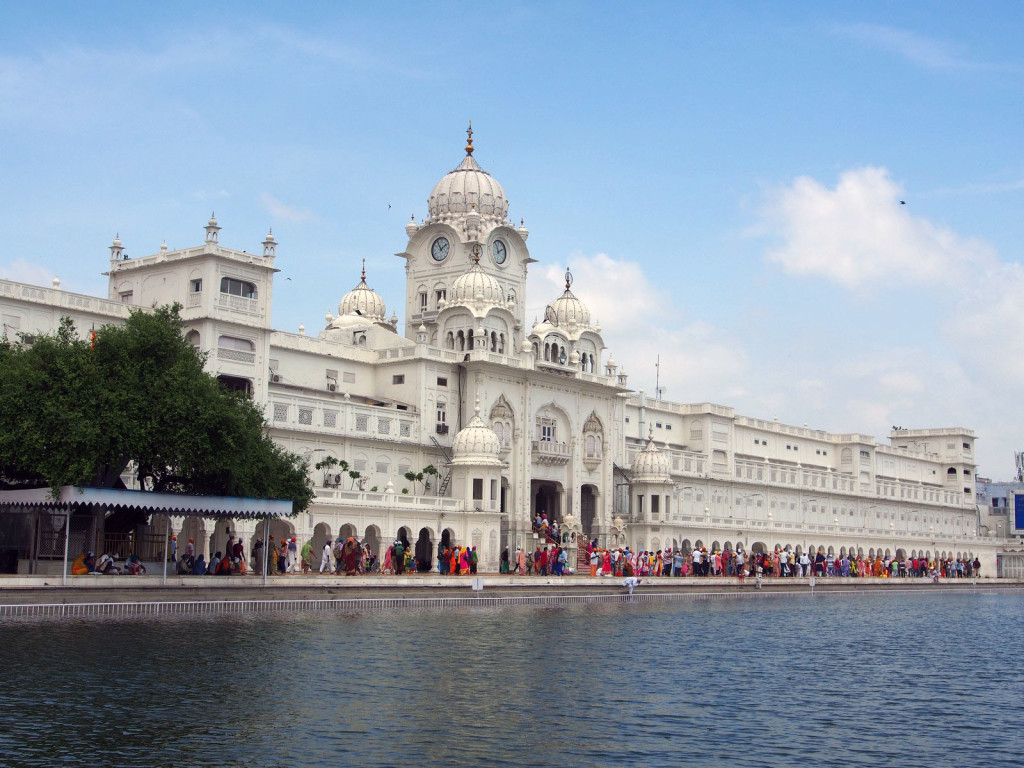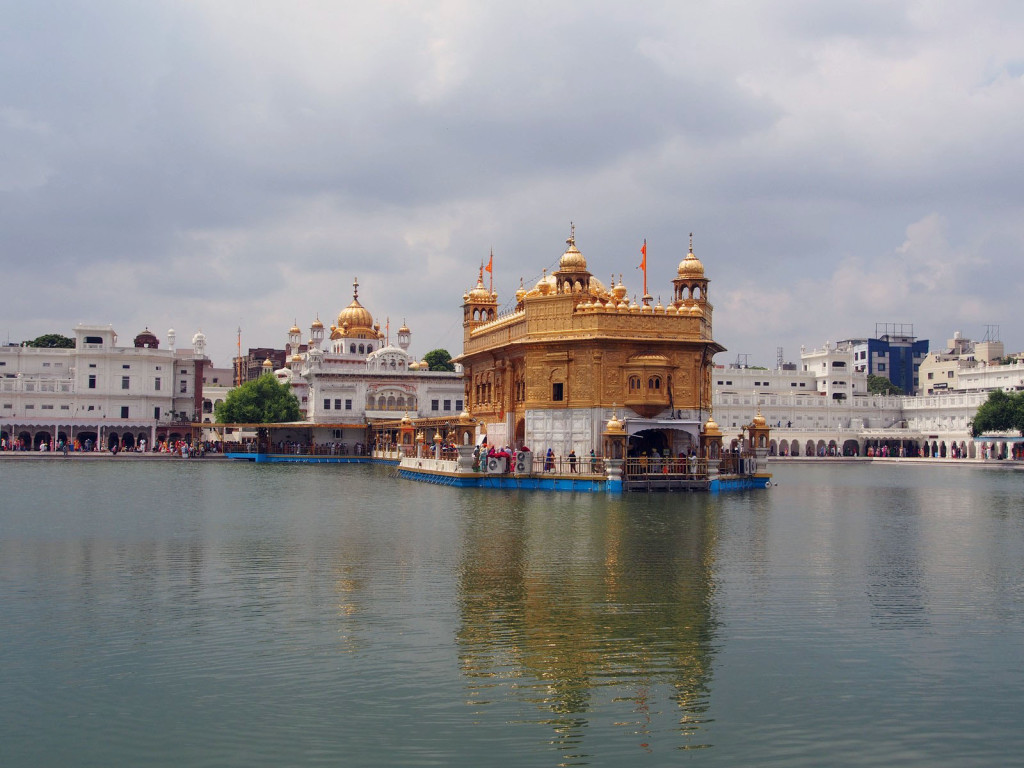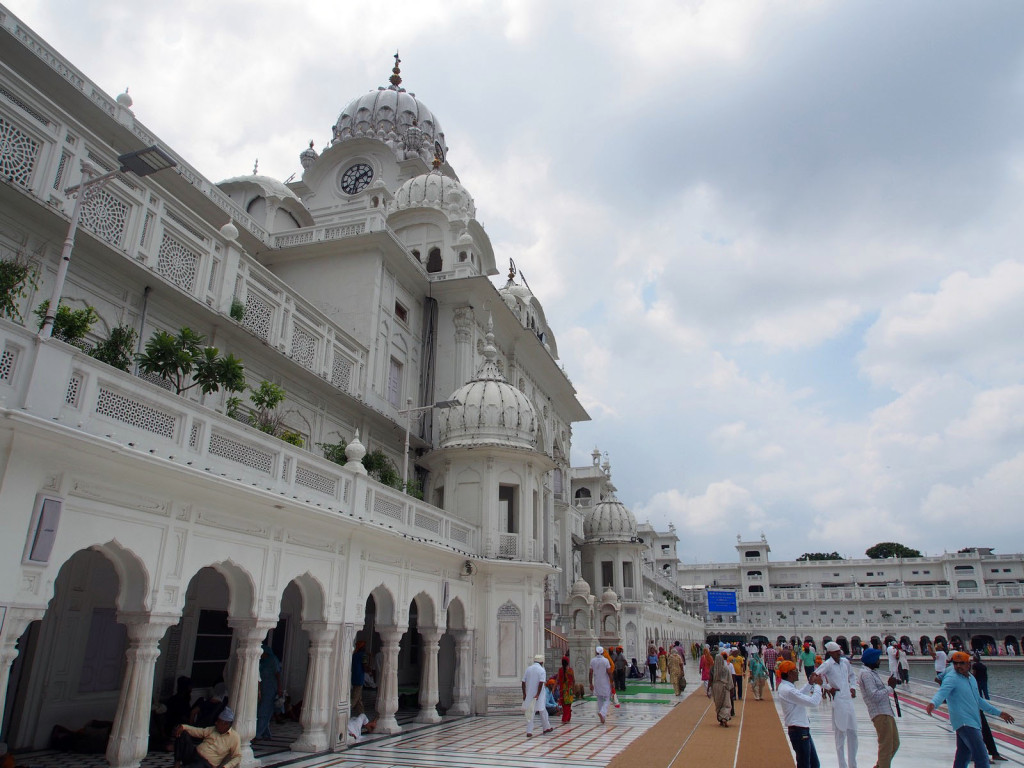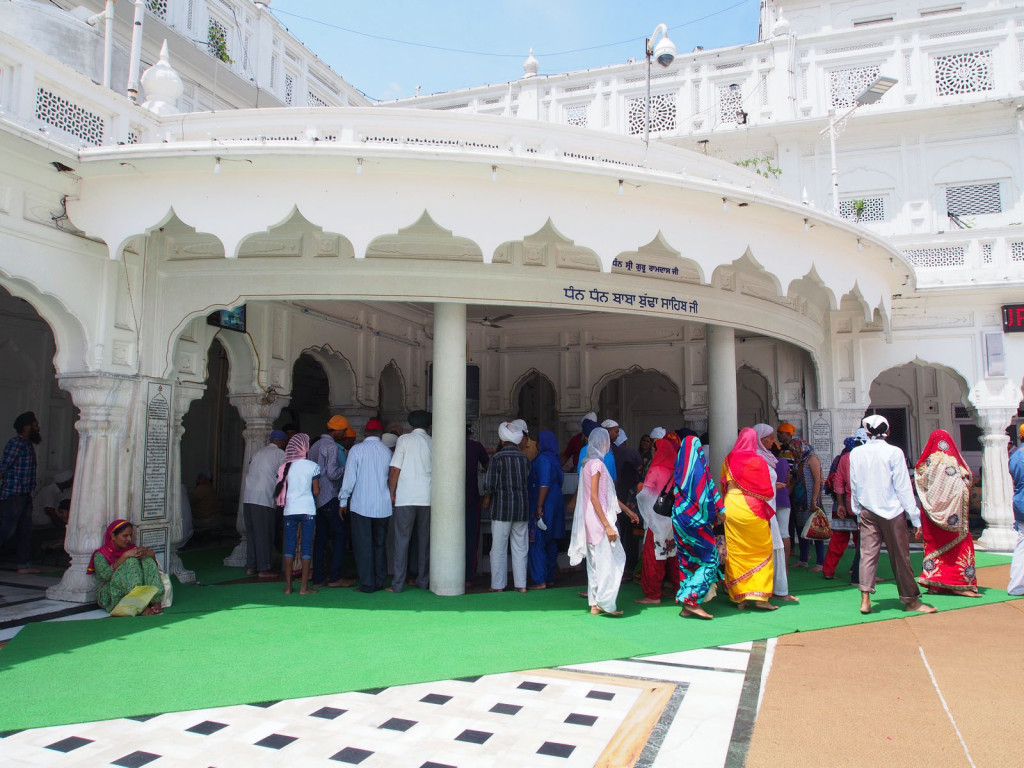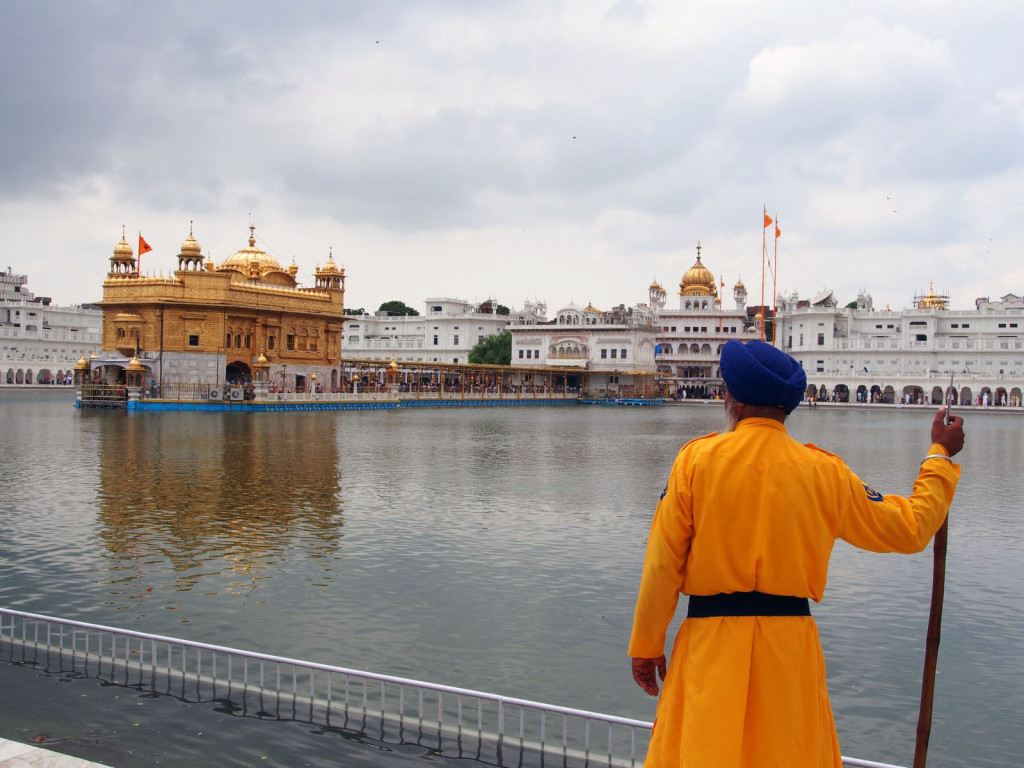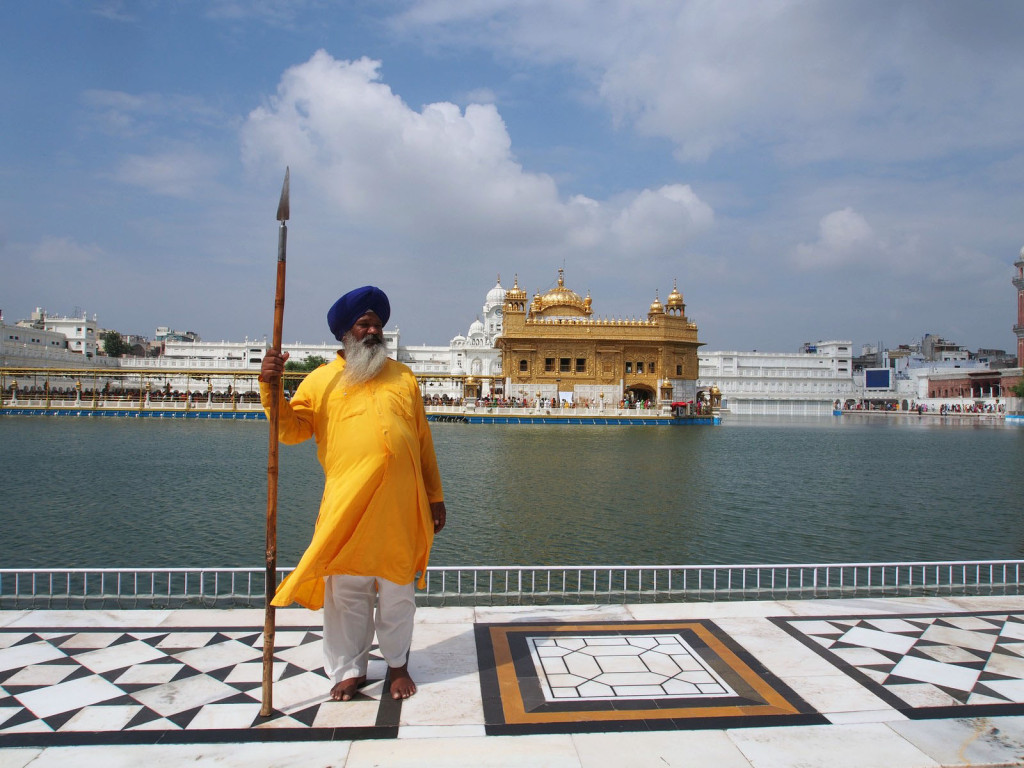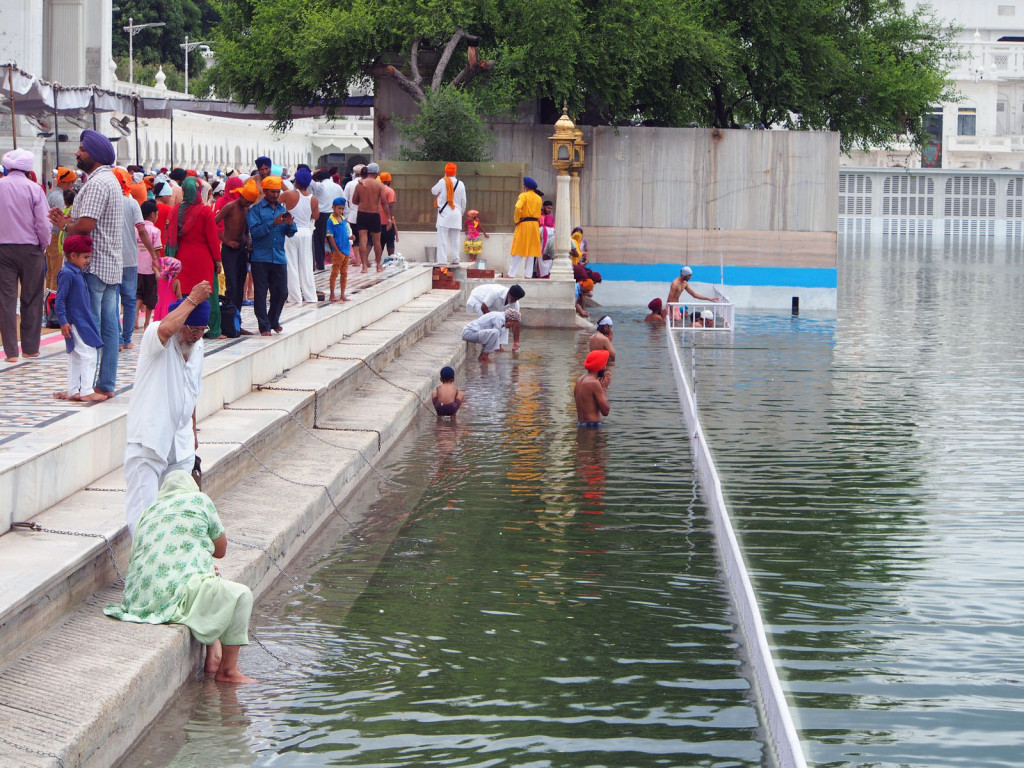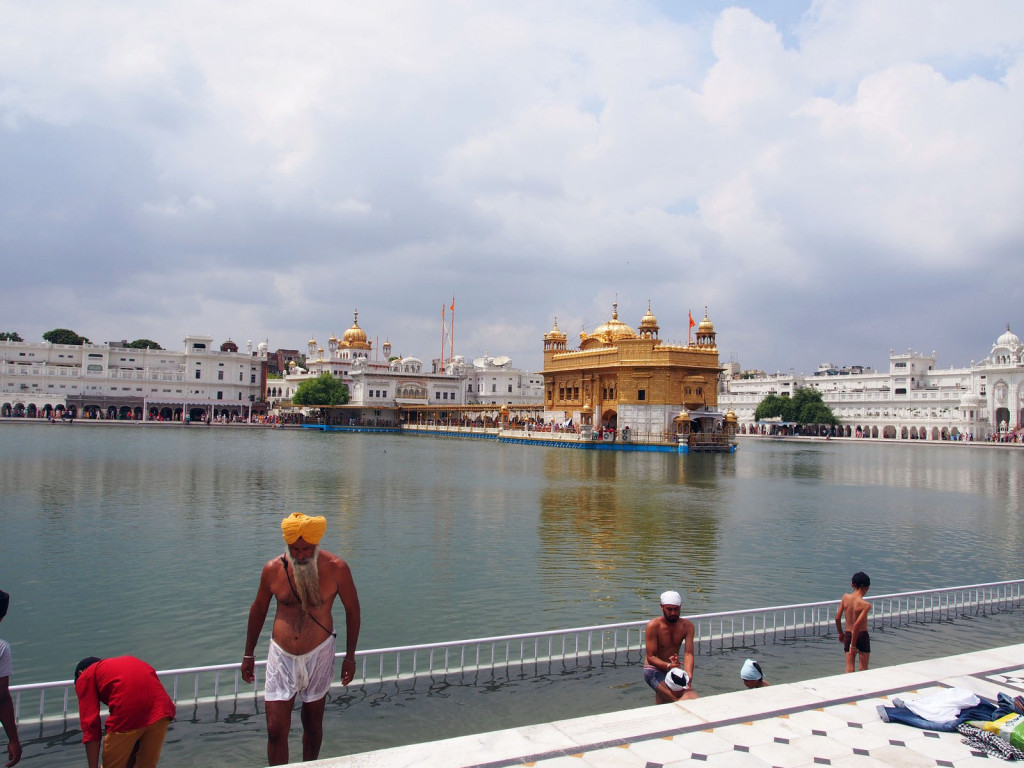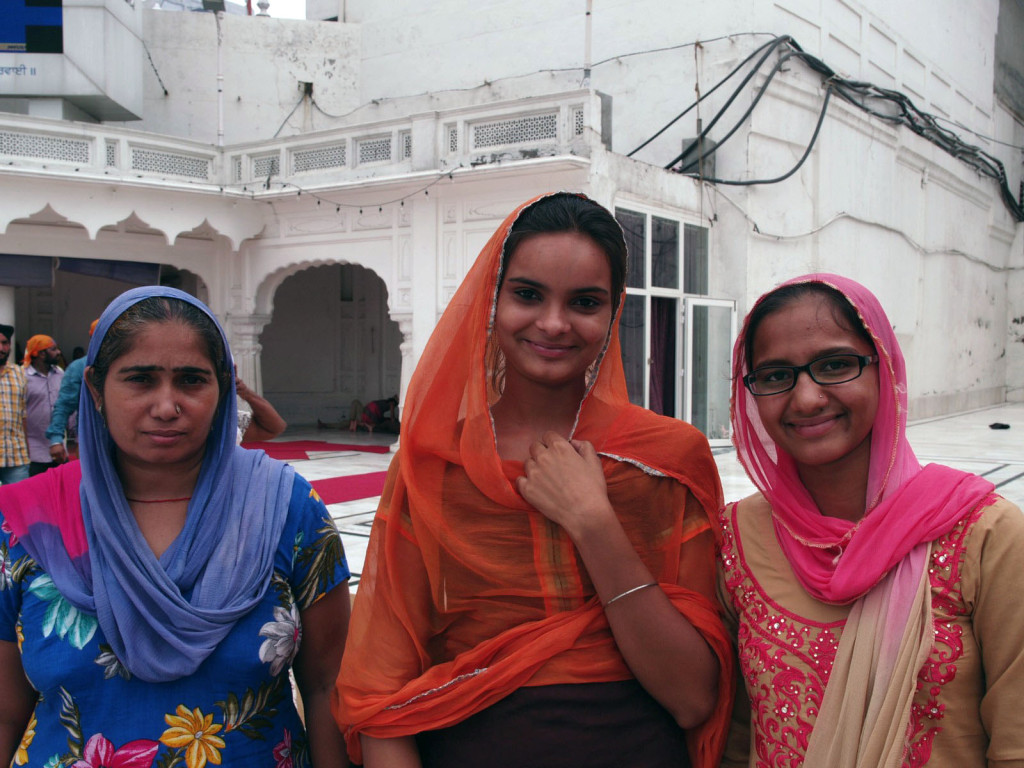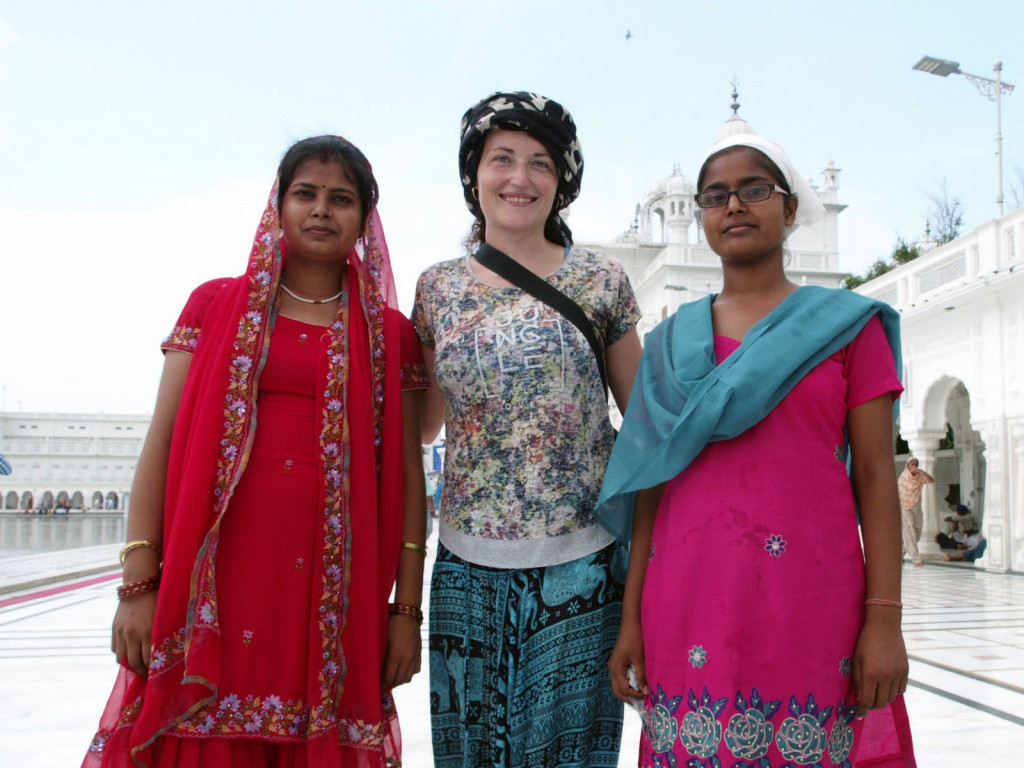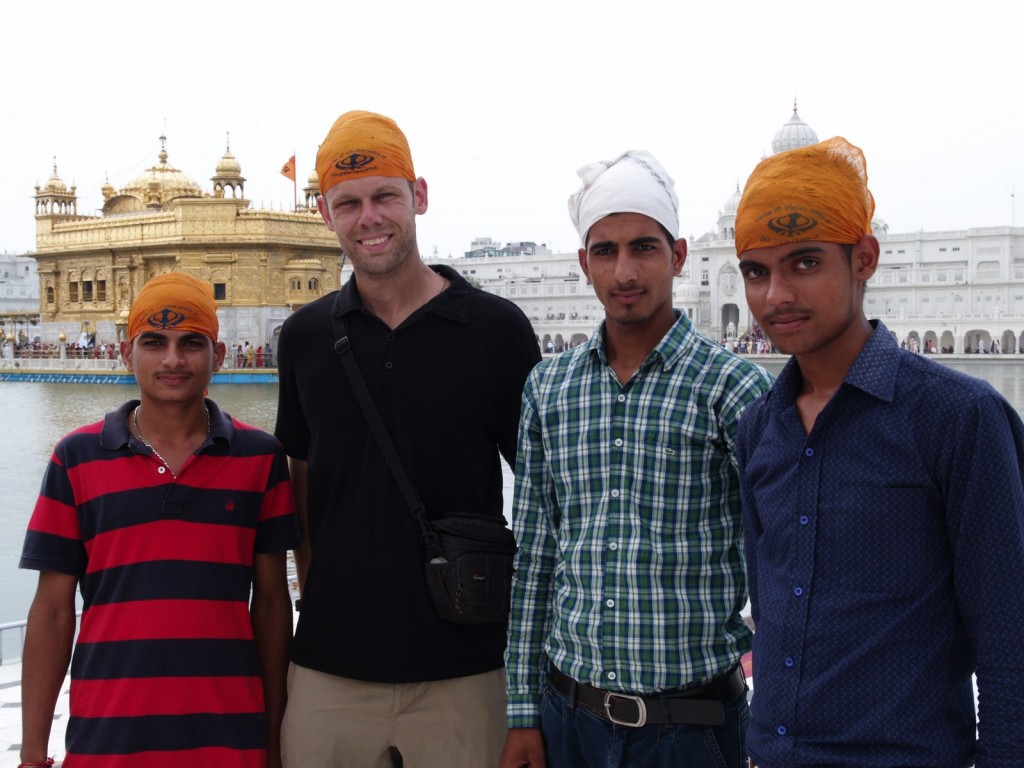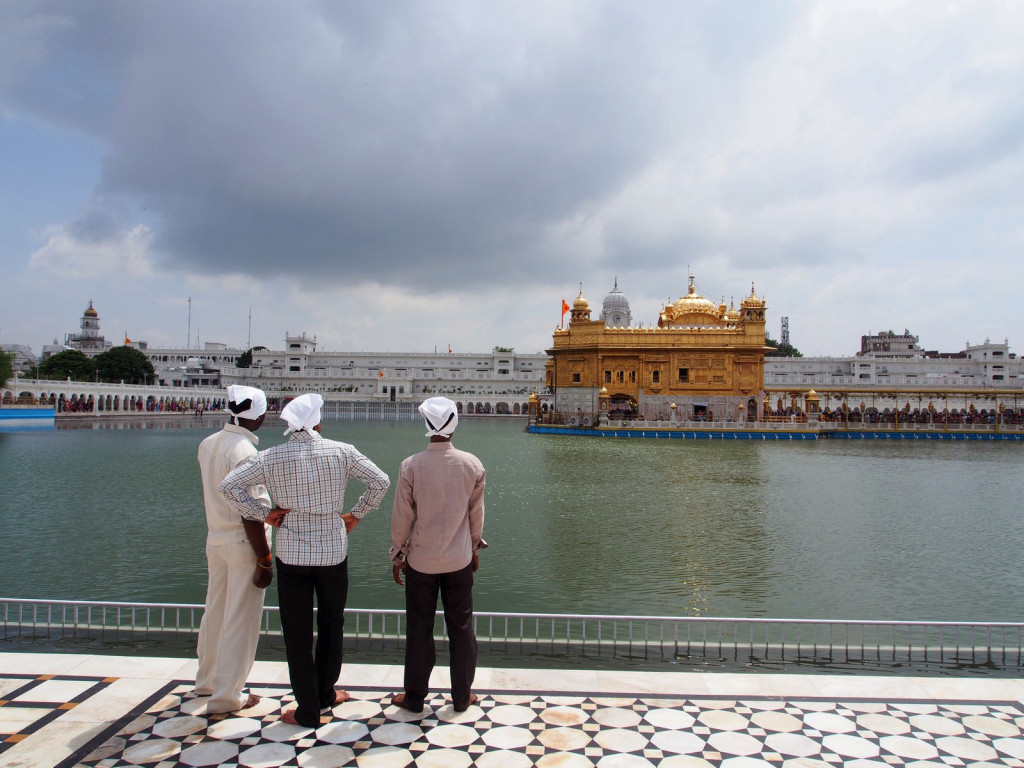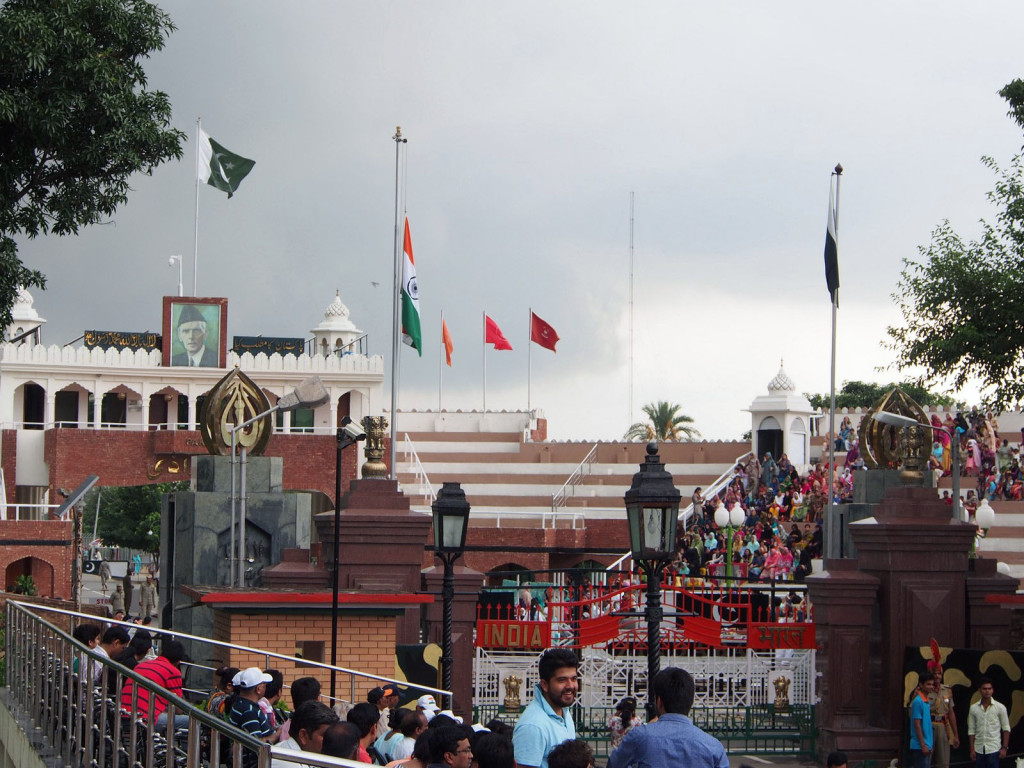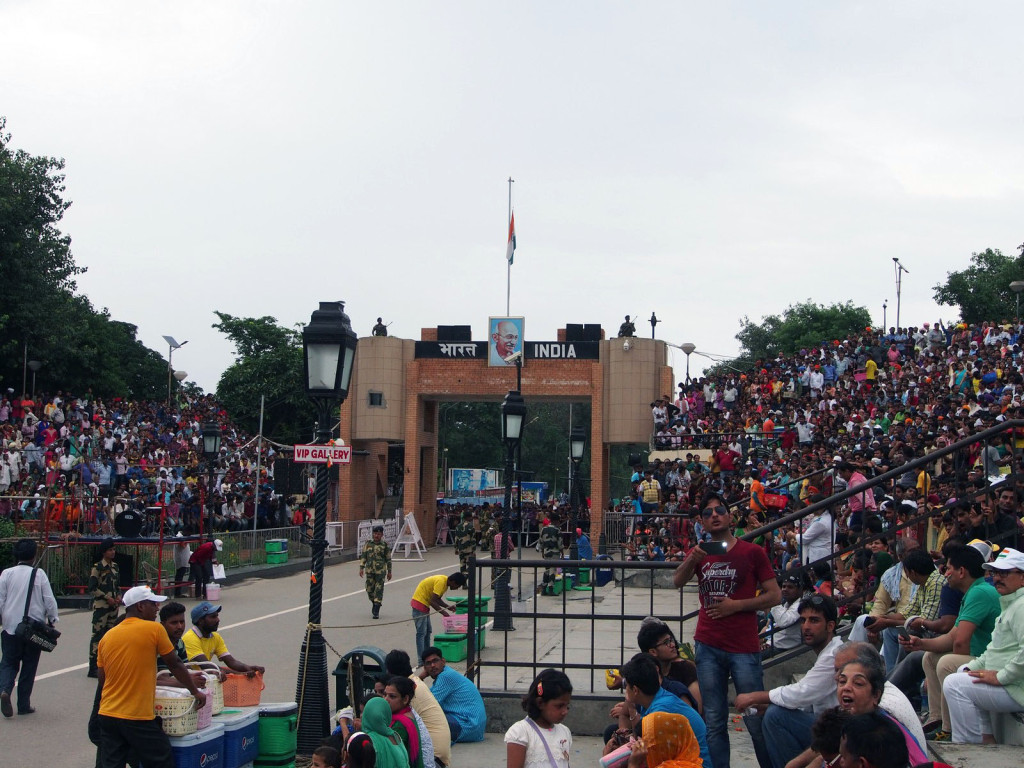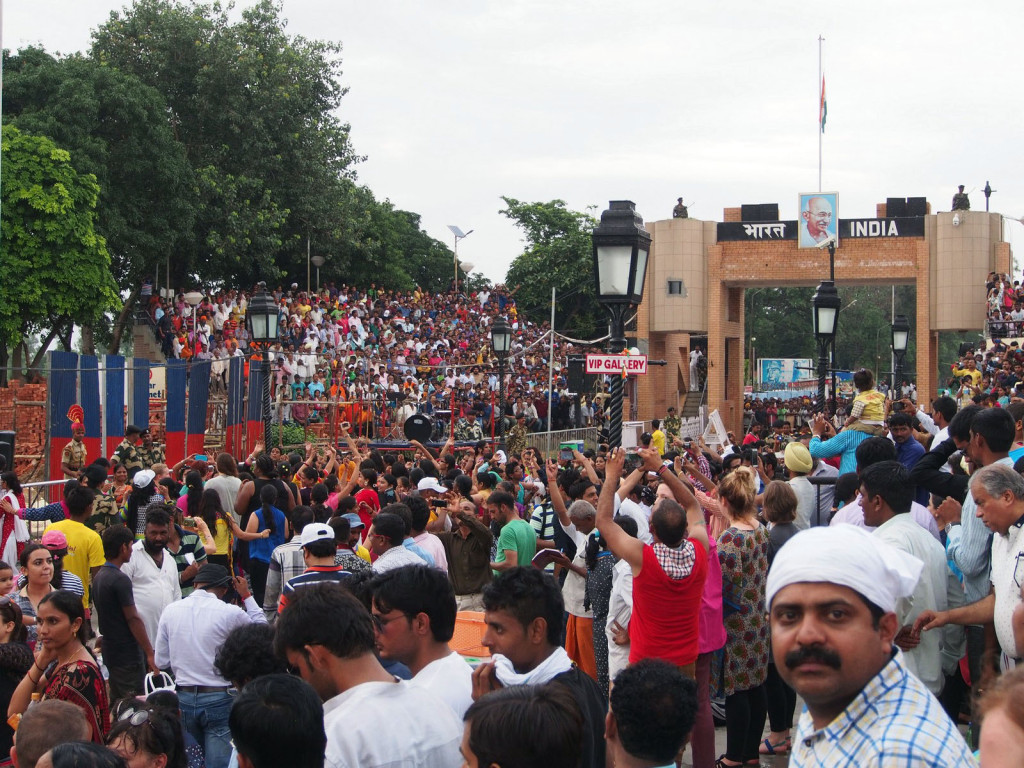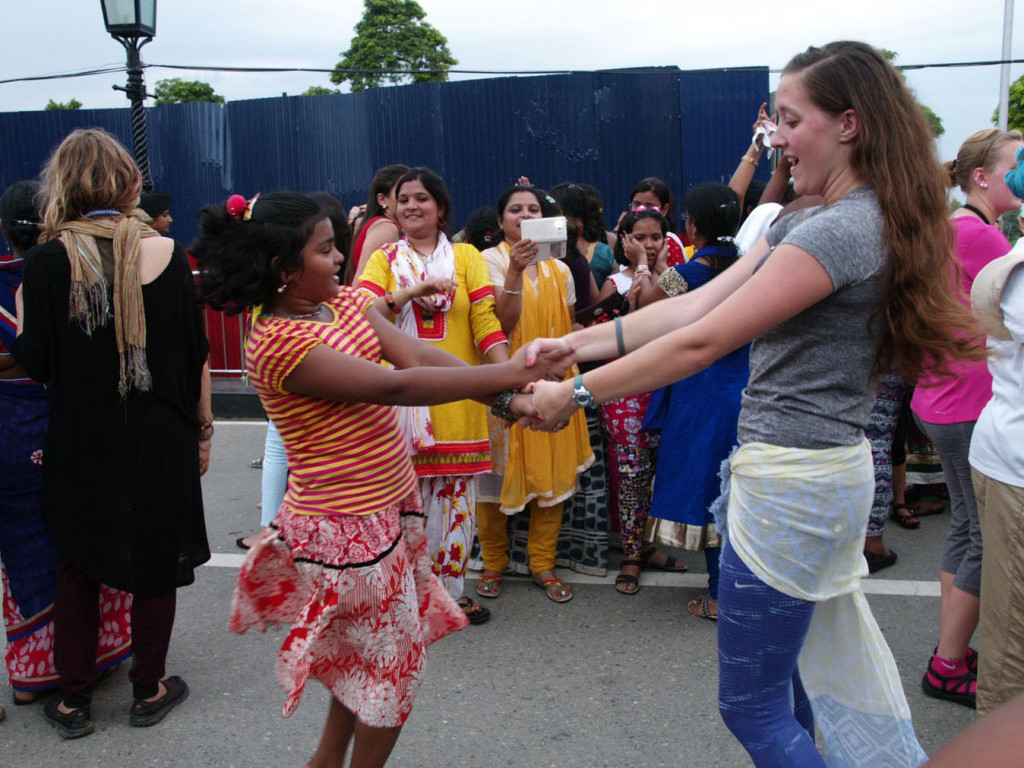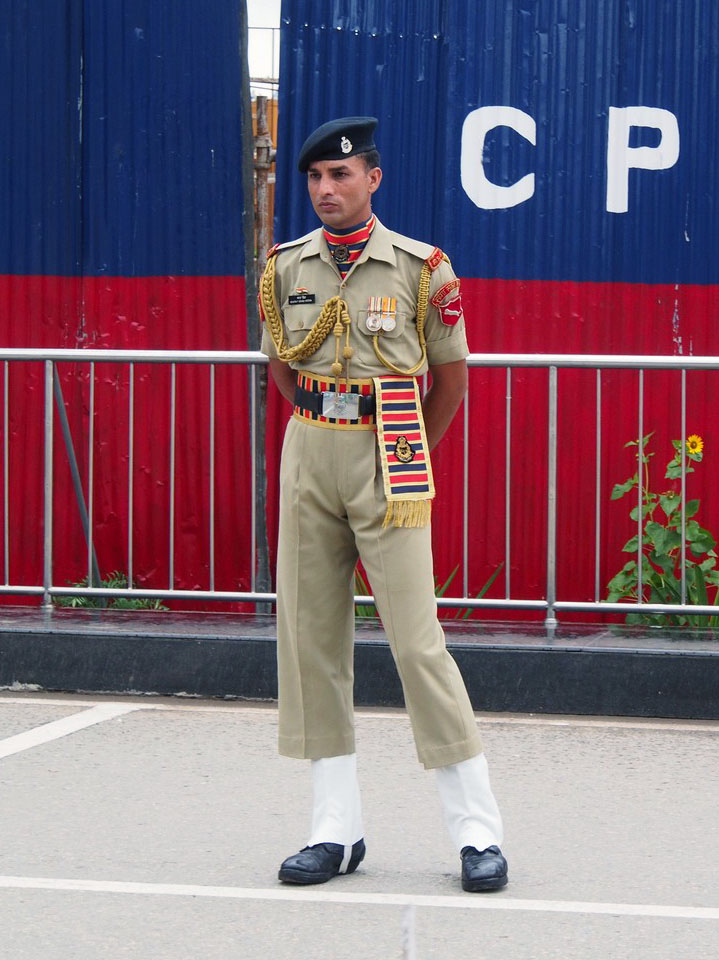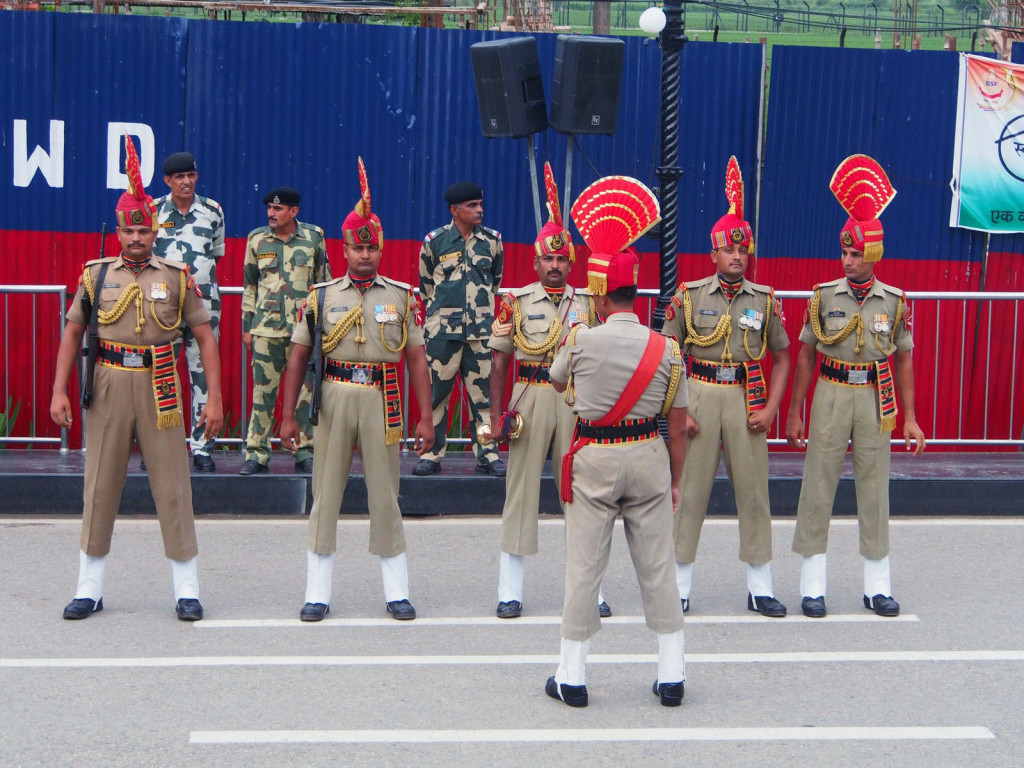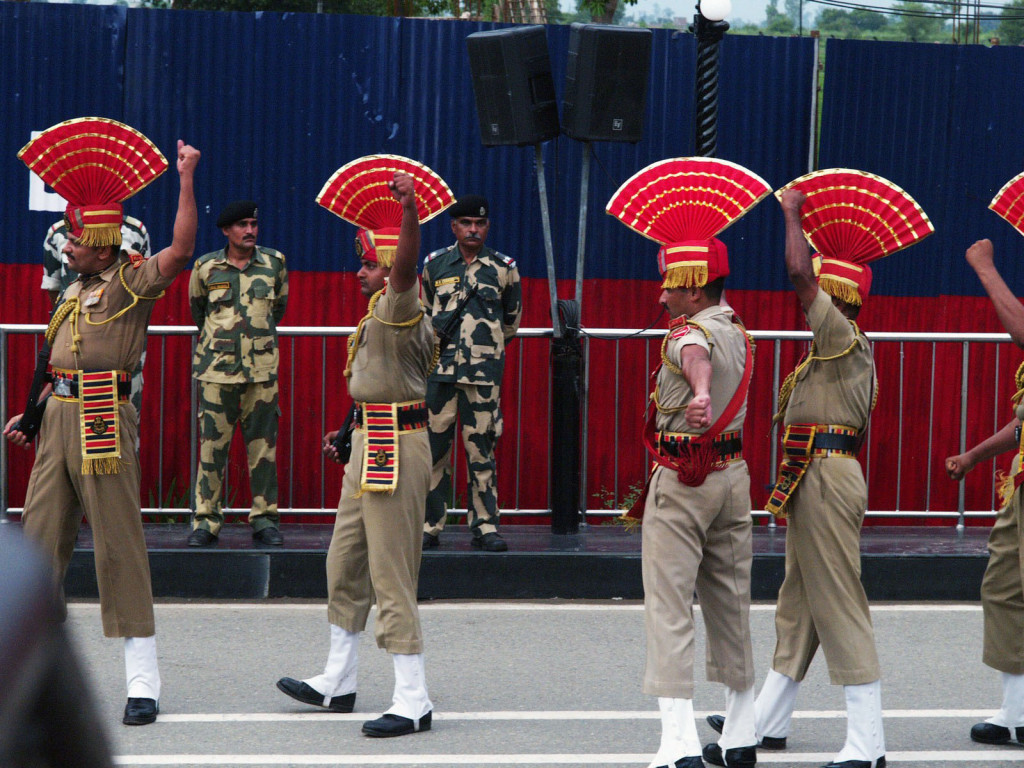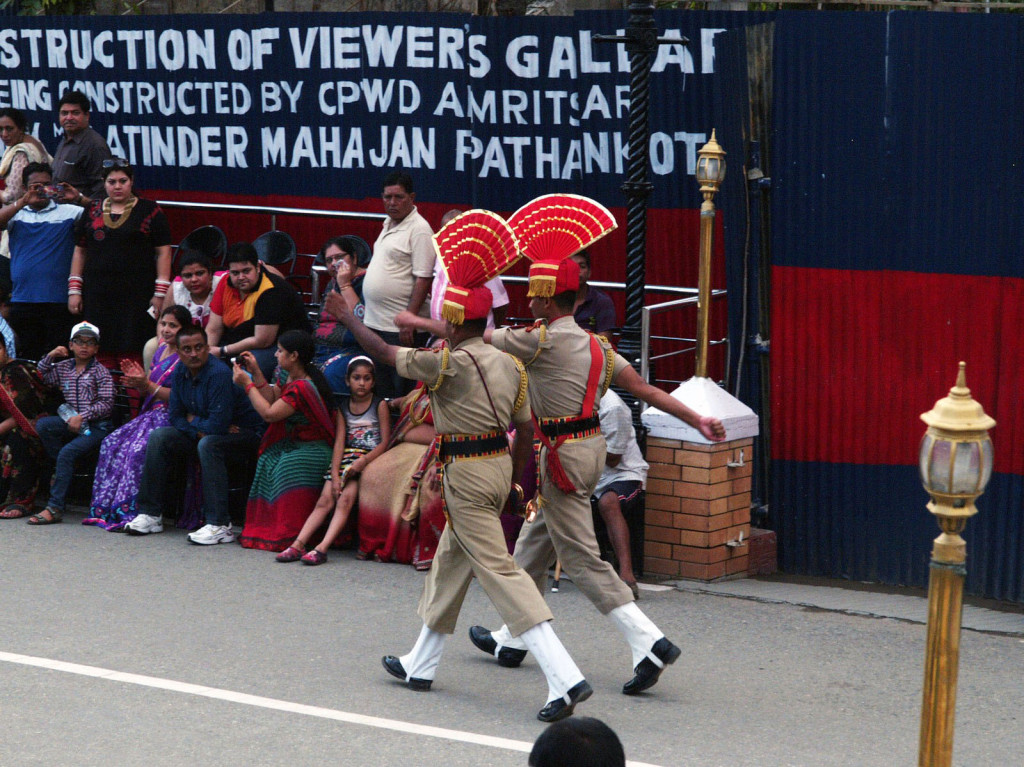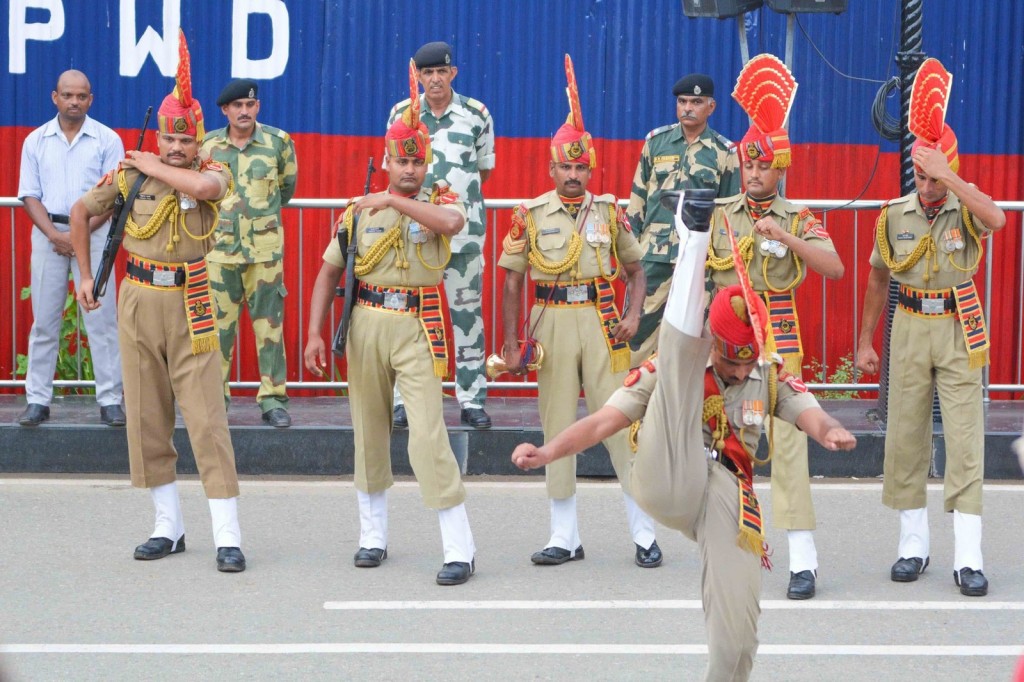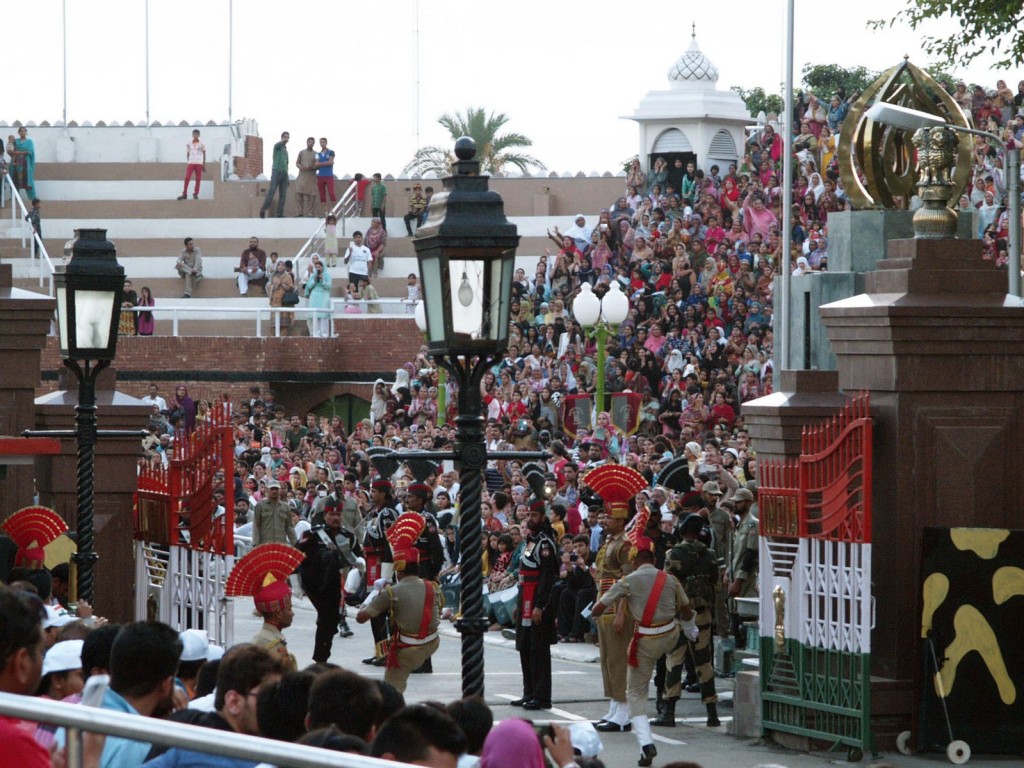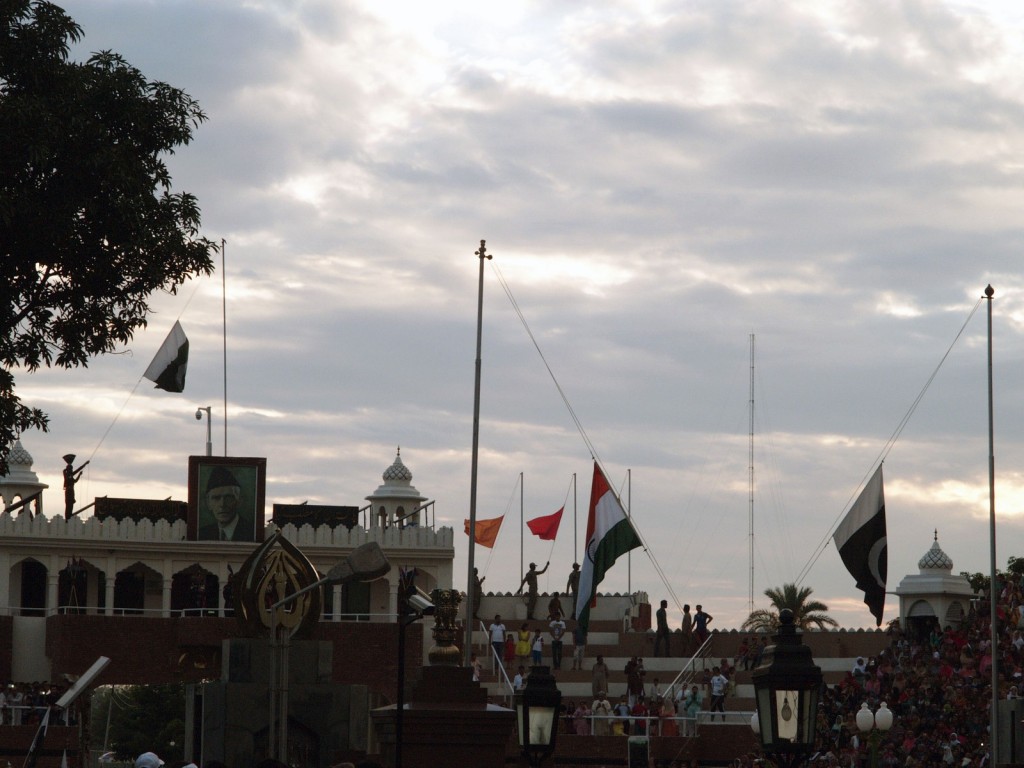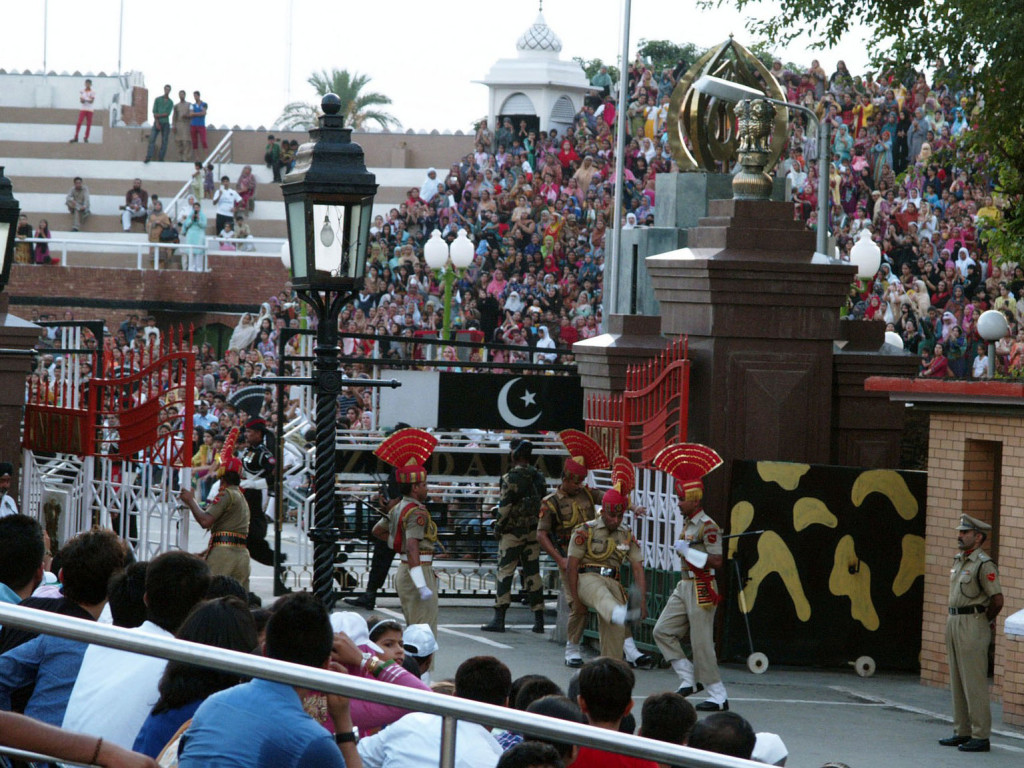A long, winding day of riding took us from Manali to Amritsar in the west, around 30 kilometres from the Pakistani border. This is the centre of Sikhism, an offshoot of Hinduism founded in the 15th Century, which also maintained an empire across parts of India and Pakistan briefly, post-Mughal era. Thus, our last day in India was spent visiting the Harimandir Sahib, or Golden Temple, the holiest site for Sikhs.
On the way in, you must cover your hair (both males and females), and wash your hands and feet – the latter taken care of by a channel across the entry.
The complex is large, consisting of the Golden Temple itself in the centre of the holy lake, surrounded by white marble buildings and halls. Immediately obvious on entry is not just the Golden Temple itself but the long line of devotees awaiting access into the inner sanctum.
The temple also provides free food and drink to adherents and lay visitors alike – a simple meal of dahl and flat bread, but over 100,000 meals are served every day.
A number of ceremonial guards patrol the edge of the water, keeping adherence to the rules, armed with spears – they’re very friendly though.
Pilgrims come here to bathe in the holy waters.
We were pleasantly surprised by how friendly the people were – constantly saying hello with a big smile, asking how we were, where we were from et cetera. Lots of people asked for photos or selfies with us.
As always, it’s the people watching that is the most interesting in these places. It’s quite easy here, since the Golden Temple attracts more visitors per day than the Taj Mahal!
The other major attraction of Amritsar is the border closing ceremony at Wagha, some 30 kilometres away. Until recently this has been the only open crossing between the two countries (with almost 3,000 kilometres of border), in a relationship marred by the considerable mutual animosity and distrust. A complex and impressive military spectacle has formed around the closing of the gates each day, where the two sides compete in aggressive ceremonial displays culminating with a simultaneous lowering of the flags, a brusque handshake, and the closing of the gates across no-man’s-land.
To approach the ceremony, you have to pass through multiple rigorous security checks, including pat-downs and questions about anything you’re carrying. Once inside, however, seated on the purpose-built grandstands, the atmosphere is more akin to a sporting match – with locals on either side of the border cheering and barracking for their side, and even MCs to stir the crowd up.
There are the functional, metal gates in the centre, around which the ceremony is based (bottom right), and the ceremonial gates 50 metres behind, each topped by a large flag and portrait of the founding father (Jinnah and Gandhi respectively).
In the leadup to the ceremony, both sides compete on music volume, and the Indian side hosts an impromptu dance party.
The soldiers are in some of the most elaborate ceremonial dress I have ever seen.
Finally the ceremony proper starts, with soldiers parading around in the most ludicrously over-the-top fashion – feet above heads, stomping down with full force, standing face to face within inches of the opposing side and pulling poses that wouldn’t be out of place in a strongman competition.
After the mad posturing, there’s a pause in the action as the two sides slowly lower their flags, then with a brusque handshake and a slamming of the gates, it’s all suddenly over.
We returned to Amritsar for the night, and prepared to cross the exact same border the next morning.

